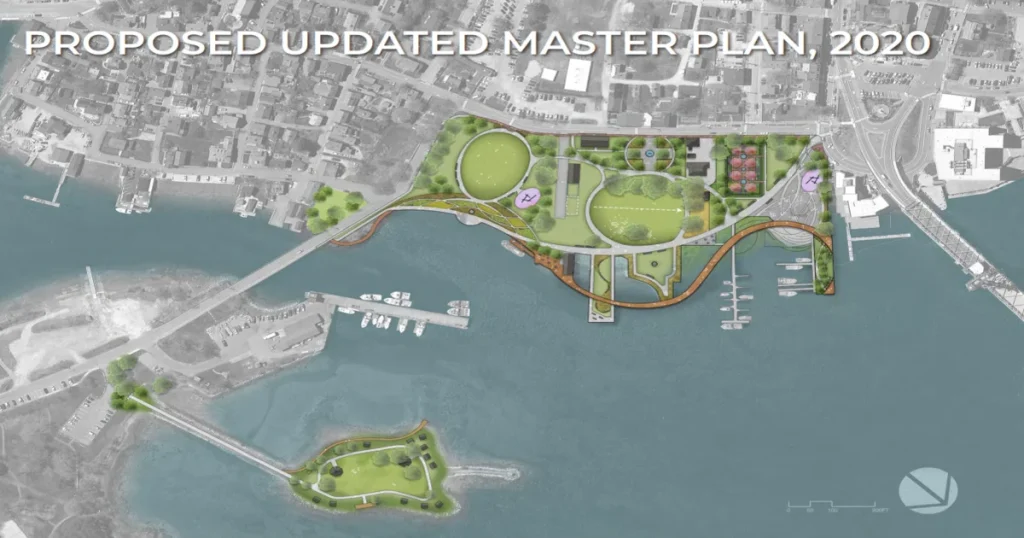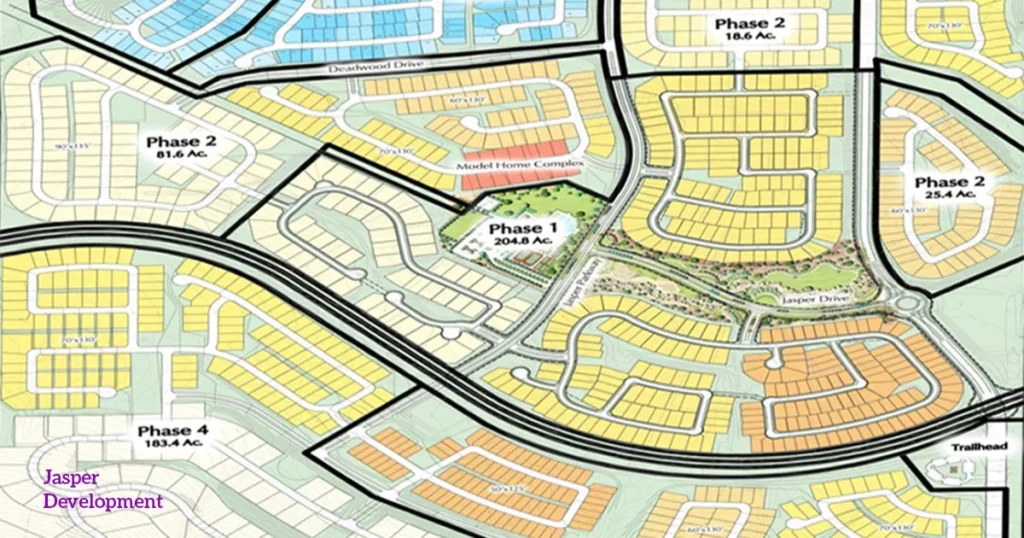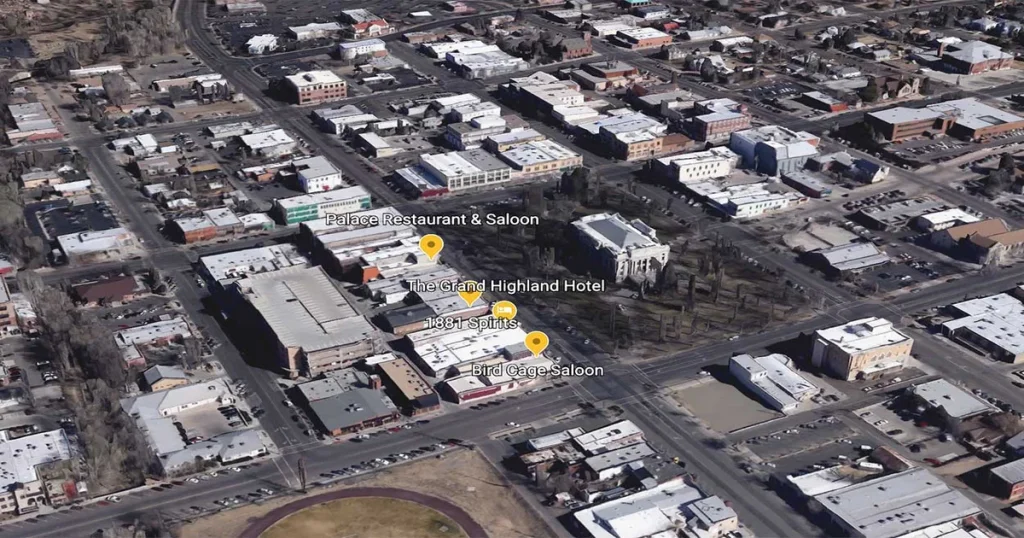Prescott, a city steeped in rich history, finds itself at the crossroads of economic progression and sustainable development. The economic implications of urban planning in Prescott shape the very fabric of its society, influencing job prospects, property values, and business investments.

In this article, we’ll journey through the intricate tapestry of urban planning’s impacts on the local economy, emphasizing Prescott’s unique narrative.
Foundations of Urban Planning in Prescott
In the annals of American history, Prescott stands as a testament to resilience. Nestled in Arizona’s high country, the city’s evolution in urban planning traces back decades. As urban planning emerged as an essential facet of city governance, Prescott faced challenges and opportunities alike.
Historically, Prescott has had its share of visionaries who have emphasized the value of well-structured urban planning. From reimagining city landscapes to fostering communities that thrive, urban planning has become an indelible part of Prescott’s growth story. This isn’t merely a tale of aesthetic appeal; it’s about striking a balance between economic viability and sustainable living.
The Evolution of Urban Planning in Prescott: A Timeline
Looking back, Prescott’s transformation has been remarkable. From a mining hub in the 1800s to a bustling urban center, the city has evolved in leaps and bounds. Early planners realized the value of harnessing natural resources without compromising the environment. This vision laid the groundwork for what we see today – a blend of historic charm and modern amenities.
Such foresight wasn’t without its challenges. As Prescott transitioned through various economic phases, the need to align urban planning with changing demands became evident. Old mining paths paved the way for transportation routes, and town squares evolved into hubs of commerce and recreation.
Key Stakeholders and Their Roles
Every city’s development story features key players – and Prescott is no exception. From government agencies to real estate developers and community leaders, many have played pivotal roles in shaping Prescott’s urban landscape.
Government bodies, for instance, have been instrumental in setting guidelines that steer the direction of development. By ensuring that regulations are in place, they’ve struck a balance between rapid growth and sustainable practices. City of Prescott provides resources that highlight the city’s commitment to planned urban development.
Real estate developers, on the other hand, bring in a mix of commercial acumen and visionary planning. Their role often involves liaising with the local communities to ensure that new projects align with the city’s broader vision.
Economic Benefits of Thoughtful Urban Planning
Economic challenges, whether stemming from global downturns, technological disruptions, or regional policy changes, have a profound impact on cities and their inhabitants. These challenges can manifest as unemployment spikes, business closures, and reduced public revenue.
However, overcoming such hurdles requires a blend of proactive policies, resilient infrastructures, and community engagement.
Cities that prioritize diversification, invest in continuous skill development of their workforce, and foster a supportive environment for entrepreneurship are often better equipped to navigate economic storms. The key lies in not just reacting to challenges, but proactively building an adaptive and robust economic framework.
Boost in Local Employment
Prescott’s urban planning initiatives have invariably led to a spike in job opportunities. New projects mean new jobs, and this relationship is evident in the construction and service sectors of the city.
- Creation of Construction Jobs: As new buildings, parks, and infrastructural projects sprout up, there’s a demand for skilled labor. Construction companies, architects, and civil engineers find a growing market in Prescott, further fueling the local economy.
- Enhancement of Service Sector Jobs: With infrastructural development, service sectors, ranging from hospitality to IT, flourish. Modern amenities draw businesses, and businesses bring jobs.

Increase in Property Values
There’s a clear correlation between urban planning and property valuations. A well-planned city sector invariably becomes a coveted address, pushing up real estate prices.
- Factors Driving Up Property Value: Aesthetic appeal, infrastructure, accessibility, and amenities play crucial roles. Neighborhoods close to parks, schools, or transport hubs often witness a surge in demand.
- Comparison with Non-planned Areas: While Prescott boasts of several planned neighborhoods, the contrast with non-planned sectors is stark. As per Realtor.com, planned areas in Prescott command a higher price, underscoring the economic benefits of systematic urban planning.
Attracting Investments and Businesses
Urban planning doesn’t operate in isolation. Its ripple effect extends to the business ecosystem, making the city an attractive destination for investors and entrepreneurs.
- Role of Infrastructure in Luring Businesses: Efficient transport systems, robust power supply, and seamless internet connectivity become massive draws. Companies often cite these as deciding factors when choosing a location.
- The Promise of a Planned Urban Environment for Startups: Startups, especially those in the tech domain, are increasingly looking at cities like Prescott. A blend of lifestyle and business amenities makes it an attractive proposition.
Tourism and its Economic Spillover
Prescott’s charm isn’t lost on tourists. As urban planning enhances the city’s appeal, the tourism sector sees a direct boost.
- Boosting Prescott’s Attractiveness: By maintaining historic landmarks while introducing modern amenities, urban planning ensures tourists get the best of both worlds.
- Revenue Generation through Tourism: Beyond direct revenue from tourism, there’s significant spillover in local businesses, restaurants, and the arts. Sites like TravelArizona showcase Prescott as a must-visit destination, reinforcing its allure.
Economic Challenges and Overcoming Them
Economic challenges, whether stemming from global downturns, technological disruptions, or regional policy changes, have a profound impact on cities and their inhabitants. These challenges can manifest as unemployment spikes, business closures, and reduced public revenue.
However, overcoming such hurdles requires a blend of proactive policies, resilient infrastructures, and community engagement. Cities that prioritize diversification, invest in continuous skill development of their workforce, and foster a supportive environment for entrepreneurship are often better equipped to navigate economic storms.
The key lies in not just reacting to challenges, but proactively building an adaptive and robust economic framework.
Balancing Growth with Sustainability
Rapid urbanization often comes at an environmental cost. Prescott’s challenge lies in fostering growth while being ecologically responsible.
- The Cost of Rapid, Unplanned Development: Overdevelopment can strain resources. Water scarcity, increased pollution, and loss of green spaces become real concerns.
- Measures to Ensure Sustainable Growth: Adopting green building standards, promoting public transportation, and preserving natural habitats are just a few ways to strike a balance. Organizations like Sustainable Prescott champion such initiatives, ensuring growth doesn’t come at nature’s expense.
Addressing Income Inequality and Affordability
Economic growth often shines the spotlight on income disparities. The very factors that drive up property values can inadvertently make living unaffordable for some residents.

- Economic Disparities Due to Urban Planning: As certain sectors boom, there’s a risk of other sections being left behind. This can create pockets of affluence and areas of economic stagnation.
- Potential Solutions and Best Practices: Fostering inclusive growth, promoting affordable housing, and ensuring diverse job opportunities can help bridge this divide. The Urban Land Institute often discusses inclusive urban planning strategies that cities can adopt.
Infrastructure Strain and Maintenance
Infrastructure development is a double-edged sword. While it’s essential for growth, maintaining it requires resources – both monetary and human.
- Budgetary Implications: Maintenance costs can strain city budgets, leading to debates on funding sources and allocations.
- Long-Term Economic Considerations: It’s crucial to look beyond immediate costs. Well-maintained infrastructure can yield long-term economic dividends, making the initial investment worthwhile.
The Risk of Over-dependence on One Sector
Economies that lean heavily on one sector are vulnerable to external shocks Such over-dependence can lead to economic instability, especially if that sector faces downturns or unforeseen challenges.
For instance, while tourism is a significant boon for Prescott, relying too heavily on it without diversifying the city’s economic base could be problematic. Tourism is susceptible to factors like global economic conditions, political climates, or even health crises, as the recent COVID-19 pandemic has shown.
Balancing Diversification with Specialization: While it’s advantageous for cities to have a robust sector driving their economy, diversification ensures stability. It’s much like a balanced investment portfolio – while some stocks might underperform, others could thrive, ensuring overall growth.
Learning from Other Cities: Many cities globally have faced economic downturns due to over-reliance on a single sector. Detroit’s dependence on the automobile industry and Las Vegas’s on tourism are classic examples.
Lessons from these cities can offer Prescott insights into ensuring a balanced economic growth trajectory. Economic Diversification Studies from reputable think tanks shed light on these scenarios, emphasizing the need for a multifaceted economic approach.
Urban Planning Successes and Failures
Urban planning is a delicate balance of vision, pragmatism, and adaptability. Its successes can be observed in cities where infrastructure, green spaces, and historical preservation coexist harmoniously, fueling both economic growth and societal well-being.
These successes foster vibrant, livable cities that attract businesses, and tourists, and foster community spirit. Conversely, its failures manifest in congested cities, with inadequate infrastructure, uncontrolled sprawl, or stark economic disparities.
In such scenarios, short-term gains often overshadow long-term sustainability, leading to challenges like traffic snarls, pollution, and declining quality of life. The contrasting outcomes underscore the critical importance of thoughtful, inclusive, and forward-looking urban planning.
A Tale of Two Neighborhoods: Economic Disparities in Urban Planning
While certain Prescott neighborhoods have thrived thanks to effective urban planning, others have lagged. The contrasts between these areas are evident in economic metrics, lifestyle quality, and social indicators.
One notable example is the difference between areas with robust public transportation networks versus those without. The former witness more footfall, higher business revenues, and generally better economic health. On the other hand, neighborhoods that lack these amenities often face stagnation.
Prescott’s Standout Urban Planning Projects and Their Economic Impact

Certain urban planning initiatives in Prescott stand out for their visionary approach. For instance, projects focusing on green spaces not only enhance the city’s aesthetic appeal but also boost the local economy by drawing in tourists and increasing property values.
Another success story revolves around Prescott’s approach to preserving historical sites. While it’s tempting to give way to modern infrastructures, the city has realized the economic value of its history. Tourists flock to these areas, generating significant revenue.
Lessons from Other Cities: What Prescott Can Learn
By looking beyond its borders, Prescott can draw insights from global urban planning triumphs and missteps. Cities like Copenhagen have excelled in integrating urban living with sustainability, leading to a vibrant, eco-friendly urban environment.
Meanwhile, places like São Paulo have grappled with rapid urbanization, offering lessons in the pitfalls to avoid. Comprehensive reports from Urban Planning International offer a deep dive into these diverse urban planning scenarios.
Frequently Asked Questions:
In this section, we will be delving into some of the most common inquiries and curiosities that surround our topic.
How has urban planning historically impacted Prescott’s economy?
How has urban planning historically impacted Prescott’s economy?
What are the potential pitfalls Prescott should avoid?
Over-dependence on one sector, ignoring sustainable practices, and overlooking income inequality are some key pitfalls. Diversifying the economy and fostering inclusive growth can help circumvent these challenges.
Can Prescott balance economic growth with sustainability?
Absolutely. By adopting green building practices, promoting public transport, and ensuring balanced development, Prescott can achieve both economic growth and sustainability.
How do urban planning decisions in Prescott compare to those in other similar cities?
Prescott’s urban planning approach, while unique, shares similarities with other cities focusing on sustainable, inclusive growth. The emphasis on history, green spaces, and diversification aligns with global best practices.
Conclusion
Prescott’s journey in urban planning offers a compelling study in balancing growth with sustainability. The city’s evolution, marked by economic highs and challenges, underscores the intricate relationship between urban development and economic health.
As Prescott looks to the future, the lessons from its past, coupled with insights from global urban planning paradigms, will undoubtedly shape its trajectory. In this dance between development and sustainability, Prescott continues to carve out its unique path, promising prosperity for its residents while preserving its cherished essence.



Leave a Comment
You must be logged in to post a comment.